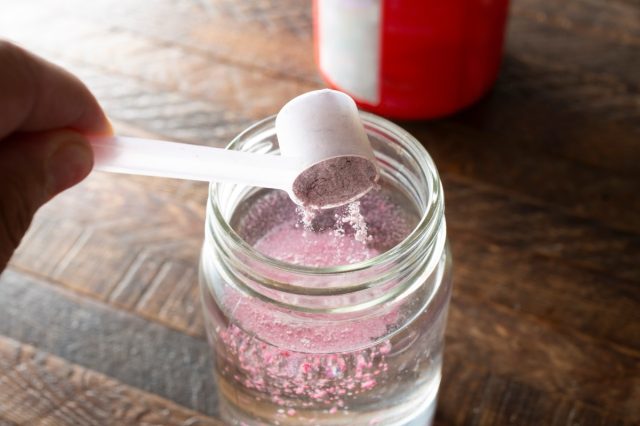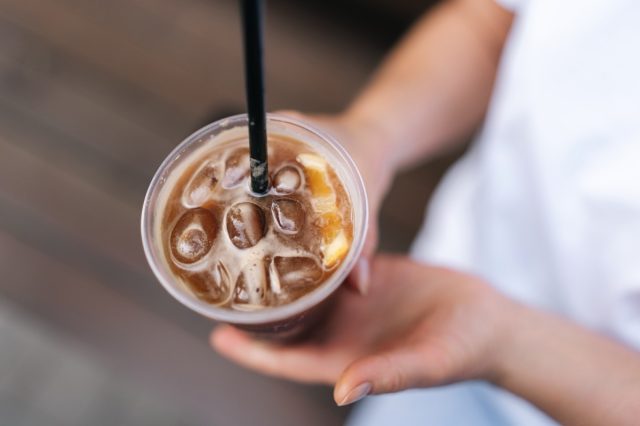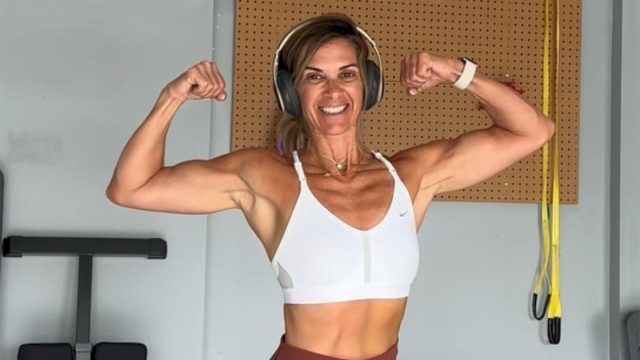I'm a Fat Loss Coach and Here Are 8 Non-Negotiables for Losing Weight Over 40
Trish Koeslag is revealing the truth about burning fat over 40. In a new social media post, the women's nutrition and fitness coach, whose mission is to help women over 40 simplify macros and movement in order to lose weight, discusses her non-negotiable for losing weight in menopause. "I'm going to keep this simple," she says at the start of the post. "If you are serious about losing weight, then you need to get serious about your habits! Especially your food habits. I am giving you the exact plan below that you need to see results. If you use this list as your guideline, it won't fail you."
Walk 10K Steps Daily
Her first piece of advice? Get your steps in! "walk every day – outside! Aim for 10K+ steps," she says. A 2018 study published in the journal Obesity found a link between walking 10,000 steps a day and weight loss and weight management. Other studies published by the Journal of American Medical Association (JAMA) in JAMA Neurology and in JAMA Internal Medicine also linked walking 10,000 steps a day to less dementia and less cardiovascular disease overall, with less heart disease, less heart failure, and fewer strokes.
RELATED: Mum Shares 11 Food Swaps That Helped Her Go From Size 22 to Size 8
Eat 25 to 30 Grams of Protein Per Meal
Next, amp up your protein intake. "Eat 25-30g of protein at every meal," she recommends. According to clinical trials, consuming more protein than the recommended dietary allowance not only reduces body weight (BW) but also enhances body composition by decreasing fat mass while preserving fat-free mass (FFM) in both low-calorie and standard-calorie diets.
Hydrate

Her next "non-negotiable" is hydration. "Drink three liters (0.8 gallons) of water daily," she recommends. Another hack? "Add electrolytes," she says. According to the Mayo Clinic, hydration is important for a variety of reasons. Water helps get rid of waste through urination, perspiration, and bowel movements, keeps your temperature normal, lubricates and cushions joints, and helps protect sensitive tissues.
RELATED: Woman Lost 42 Pounds With 5 High-Protein Meals Anyone Can Make
Strength Training
Lifting weights is also key, according to Trish. "Strenght train," she says. She suggests aiming for three to four sessions per week. According to the Mayo Clinic, strength and weight training help reduce body fat, preserve and increase lean muscle mass, and burn calories more efficiently. Strength training may also help you:
- Develop strong bones
- Manage your weight
- Enhance your quality of life
- Manage chronic conditions
- Sharpen your thinking skills.
Zone 2 Cardio
She also recommends injecting some cardio into the mix. "Zone 2 cardio," she says, recommending two to three sessions per week. What is zone 2 anyway? It is a low-intensity, steady-state workout that involves working out at 60–70% of your maximum heart rate.
Don't Drink Your Calories

Her next tip? Don't drink your calories. "Limit liquid calories," she says. Regular sodas, lemonade, coffee drinks, and alcohol are some of the biggest culprits when it comes to high-calorie beverages.
Choose Whole Foods 90 Percent of the Time
And, you should opt for healthy food – most of the time. "Choose whole foods 90% of the time," she says. The best types of whole foods are fruits and veggies, lean protein, and whole grains – basically anything that isn't ultra-processed.
RELATED: The 9 Foods You Should Always Avoid on a Weight-Loss Diet
Be Consistent, Not Perfect
Trish understands that you aren't going to achieve perfection all of the time. "Focus on consistency, not perfection," she writes. And if you enjoyed this article, take advantage of these 15 Quick Ways to Lose Body Fat Percentage in a Week.





